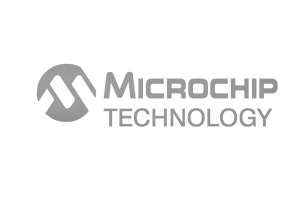ATMEGA2564RFR2-ZFR Overview
The ATMEGA2564RFR2-ZFR is a high-performance microcontroller combining a 256KB Flash memory core with an integrated 2.4 GHz transceiver optimized for wireless communication. Designed for embedded systems requiring robust RF connectivity and extensive processing capabilities, this device integrates a 32-bit AVR CPU with advanced peripherals. Its compact form factor and low power consumption make it ideal for industrial and IoT applications where reliability and efficient wireless data transfer are critical. For detailed technical support and purchasing information, visit IC 製造商.
ATMEGA2564RFR2-ZFR Technical Specifications
| 參數 | 規格 |
|---|---|
| 核心架構 | 8-bit AVR RISC |
| Program Memory (Flash) | 256 KB |
| SRAM | 32 KB |
| 操作頻率 | Up to 16 MHz |
| Integrated RF Transceiver | 2.4 GHz IEEE 802.15.4 compliant |
| 操作電壓 | 1.8 V to 3.6 V |
| 包裝類型 | 64-pin QFN |
| Digital I/O Pins | 53 |
| ADC 通道 | 16 channels, 10-bit resolution |
| 通訊介面 | SPI, UART, I2C |
ATMEGA2564RFR2-ZFR Key Features
- Integrated 2.4 GHz RF transceiver: Enables seamless wireless communication, reducing the need for external modules and simplifying system design.
- 256 KB Flash memory: Supports complex firmware and multi-protocol stacks, offering flexibility for demanding applications.
- Low power consumption modes: Optimizes battery life in portable and remote wireless devices, essential for IoT deployments.
- Rich peripheral set with 53 digital I/O pins: Facilitates extensive sensor and actuator interfacing without additional components.
- Multiple communication interfaces (SPI, UART, I2C): Enhances connectivity options for diverse industrial networks and embedded systems.
- Robust 10-bit ADC with 16 channels: Provides accurate analog signal processing for sensor data acquisition.
- Compact 64-pin QFN package: Supports high-density PCB layouts, aiding space-constrained designs.
ATMEGA2564RFR2-ZFR Advantages vs Typical Alternatives
This device stands out by integrating a high-performance AVR core with a compliant 2.4 GHz RF transceiver in a single compact package. Compared to separate microcontroller and RF modules, it offers improved system reliability, reduced PCB complexity, and lower overall power consumption. The extensive Flash and SRAM memory enable advanced applications with complex wireless protocols, while its versatile interfaces and robust ADC enhance adaptability across industrial and IoT environments.
暢銷產品
典型應用
- Wireless sensor networks requiring reliable low-power communication and real-time data processing in industrial automation or environmental monitoring.
- IoT gateways and nodes that benefit from integrated RF transceiver and microcontroller functionality for streamlined connectivity.
- Home automation devices where compact size and efficient wireless communication improve user experience and installation flexibility.
- Remote control systems leveraging the device??s multiple I/O pins and communication interfaces for precise control and feedback.
ATMEGA2564RFR2-ZFR Brand Info
The ATMEGA2564RFR2-ZFR is part of a well-established product family known for combining microcontroller performance with wireless communication capabilities. This product integrates proven AVR architecture with certified 2.4 GHz transceiver technology, reflecting a commitment to reliability and industry standards compliance. The device is designed to meet the rigorous demands of industrial and IoT applications, supported by extensive documentation and development tools from the brand.
常見問題
What type of wireless communication standards does this microcontroller support?
The built-in RF transceiver operates in the 2.4 GHz band and is compliant with IEEE 802.15.4 standards, commonly used for low-rate wireless personal area networks (LR-WPANs). This makes it suitable for protocols such as Zigbee and other proprietary wireless systems.
精選產品
How much memory is available for program code and data storage?
The device features 256 KB of Flash memory for application code and 32 KB of SRAM for data, providing ample capacity for complex embedded software, including wireless stacks and sensor processing algorithms.
What are the power supply requirements for this component?
It operates over a voltage range of 1.8 V to 3.6 V, allowing flexibility for battery-powered and line-powered systems. The low voltage operation supports energy-efficient designs, critical for portable or remote devices.
聯絡我們
Which interfaces are available for connecting external devices?
Multiple communication interfaces are provided, including SPI, UART, and I2C. These support a wide range of peripherals such as sensors, memory devices, and other microcontrollers, enabling complex system integration.
Is this device suitable for space-constrained applications?
Yes, its 64-pin QFN package offers a compact footprint suitable for high-density PCB layouts. This helps save board space in embedded designs where size and weight are critical factors.










